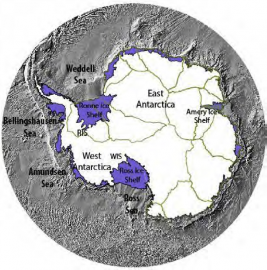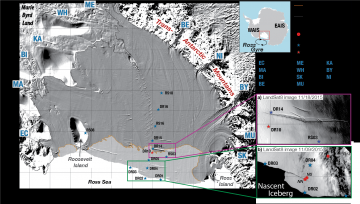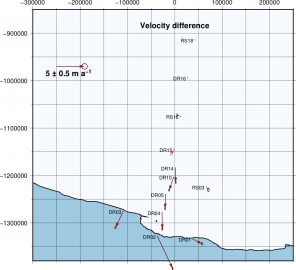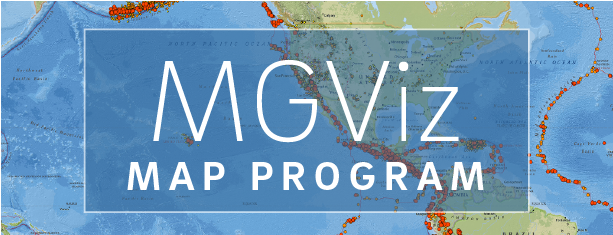Changes in the Cryosphere and Sea Level Rise: Ross Ice Shelf, Antarctica
Overview

The degree and extent of anthropogenic-driven rising air temperatures and climate change are pressing issues facing the world. Melting on the Earth’s ice sheets (mass change) in Greenland, Antarctica (Figure 1) and mountain glaciers is a significant contributor to sea level rise and is accelerating. Changes in ice shelves is a significant factor in ice sheet mass loss and sea level change. Therefore, it is important to understand the different climatic and dynamical mechanisms driving ice shelf changes. Most of the current excess mass loss of the Antarctic ice sheets is associated with the dynamic response of grounded ice to ocean-driven thinning or the collapse of ice shelves, which provide a back-stress (“buttressing”) opposing the seaward flow of grounded ice streams and glaciers. Observed acceleration of tributary glaciers following ice shelf collapse or thinning confirms the critical role of ice shelf buttressing. While some amount of ice shelf melting and calving is necessary to maintain the ice sheet in steady-state, mass loss at faster than steady-state rates will reduce an ice shelf’s buttressing ability. The strongest signals in atmospheric and oceanic forcing of ice shelves are, however, seasonal, suggesting that ice shelf response may also include a significant seasonal component.
Ross Ice Shelf project
A recent study using displacements measured by a large-scale GPS array deployed 2015 and 2016 is focused on the seasonal flow cycle of the Ross Ice Shelf in the southern Ross Sea, Antarctica (Figure 2), the world’s largest ice shelf, with an area of about 480,000 km2 (Klein et al., 2020). The study explores the hypothesis that the annual cycle of ice shelf basal melt rates drives seasonal variability of ice shelf velocities.


The study demonstrates:
(1) The melt-rate response to changes in summer upper-ocean heating near the ice front will affect future flow of the Ross Ice Shelf and its tributary glaciers.
(2) Modelled seasonal flow variations from increased summer basal melting near the ice front are much smaller than observed, suggesting that other as-yet unidentified seasonal processes are currently dominant.
(2) The strength of year-round continuous GPS observations on Antarctic ice shelves for calibrating ice sheet models and motivating consideration of new processes that might influence ice shelves and their buttressing potential.
Data Availability
Raw GPS data are archived by UNAVCO @ https://doi.org/10.7283/58E3-GA46
GPS displacement time series (in Matlab files) are archived by SOPAC @ ftp://garner.ucsd.edu/pub/projects/RossIceShelfAntarctica
Contacts
Peter Bromirski (pbromirski@ucsd.edu); Emilie Klein (klein@biotite.ens.fr); Yehuda Bock (ybock@ucsd.edu)
Reference
Klein, E., C. Mosbeux, P. Bromirski, L. Padman, Y. Bock, H. A. Fricker, S. R. Springer (2020), Seasonal cycle in flow of Ross Ice Shelf, Antarctica, driven by basal melt rate variability, Journal of Glaciology, in press.


